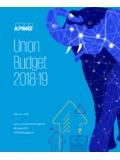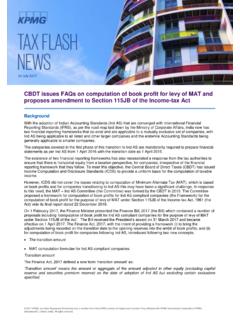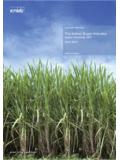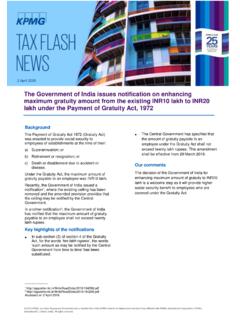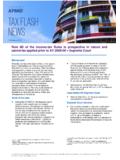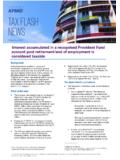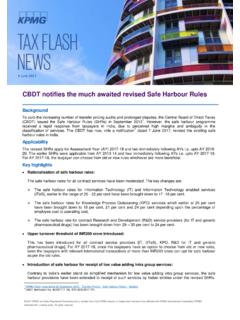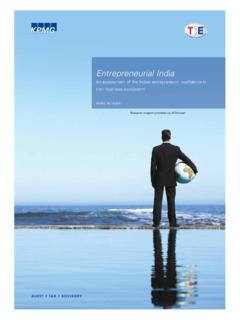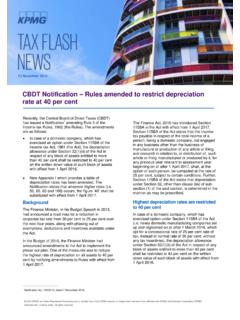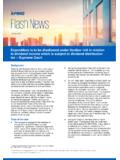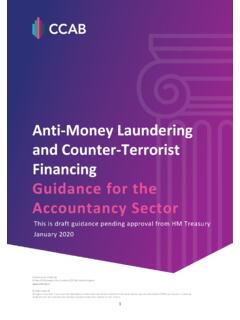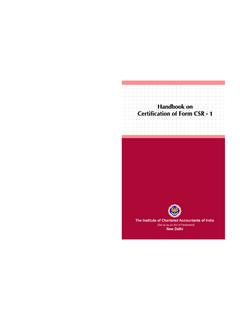Transcription of GUIDANCE NOTE ON AUDIT OF PROPERTY, PLANT & …
1 GUIDANCE NOTETHE chartered ACCOUNTANT mARCH 2011138 GUIDANCE NOTE ON AUDIT OF property , PLANT & EQUIPMENTThe following is the text of the GUIDANCE Note on AUDIT of property , PLANT and equipment (PPE) issued by the Auditing and Assurance Standards Board (AASB) of the Institute of chartered accountants of India. This GUIDANCE Note should be read in conjunction with the "Preface to the Standards on Quality Control, Auditing, Review, Other Assurance and Related Services issued by the Paragraph 26 of the "Preface to the Standards on Quality Control, Auditing, Review, Other Assurance and Related Services states that GUIDANCE Notes are issued to assist professional accountants in implementing the Engagement Standards and the Standards on Quality Control issued by the AASB under the authority of the Council. GUIDANCE Notes are also issued to provide GUIDANCE on other generic or industry specific AUDIT issues, not necessarily arising out of a Standard.
2 Professional accountants should be aware of and con-sider GUIDANCE Notes applicable to the engagement. A professional accountant who does not consider and apply the GUIDANCE included in a relevant GUIDANCE Note should be prepared to justify the appropriateness and completeness of the alternate procedures adopted by him to deal with the objectives and basic principles set out in the GUIDANCE Note." 2. This GUIDANCE Note, does not supersede the Institute's publications which provide GUIDANCE on AUDIT of property , PLANT and equipment (PPE) with special reference to certain statutory requirements, , the GUIDANCE contained in the Statement on the Companies (Auditor's Report) Order, The GUIDANCE Note has been prepared considering the relevant Revised Accounting Standard 16, property , PLANT & equipment (corresponding to IAS 16) which is being issued by the Institute pursuant to the decision to converge with the International Financial Reporting Standards (IFRS) in respect of accounting periods commencing on or after April 1, 2011 and the existing Accounting standards AS 10 Accounting for Fixed assets and AS 6 Depreciation Accounting which are applicable to the entities who are not required to comply with the relevant Revised AS.
3 Both the categories of the Accounting Standards are collectively referred to as the relevant applicable AS .4. The GUIDANCE Note does not apply to AUDIT of Investment property and Intangible In the event of a possible or perceived contradiction between the GUIDANCE Note and a Standard on Auditing (SA) issued by the Institute, the Standard shall The term property , PLANT and equipment in respect of those entities which are required to comply with the relevant Revised AS refers to such tangible items that:(a) are held for use in the production or supply of goods or services, for rental to others, or for administrative purposes; and(b) are expected to be used during more than one period. In respect of such entities which need to apply AS 10 and AS 6, the term property , PLANT and equipment comprises assets held for the purpose of providing or producing goods or services and which are not meant for sale in the normal course of business.
4 Judgement is required to be exercised in recognising what constitutes an item of property , PLANT and equipment having regard to an entity s specific circumstances. For example, major spare parts, servicing equipment , and stand-by equipment , which an entity expects to use during more than one period, can be recognised as PPE as per the relevant Revised AS. 7. An asset can be classified as a PPE or otherwise, depending upon the use to which it is put or intended to be put. For example, assets which are classified as PPE in one type of business may be considered as current assets in another. Similarly, the same asset may be classified differently in an entity at different points of time. The recognition of property , PLANT and equipment should be done as per the principles laid down in the relevant applicable AS .8. PPE normally constitute a significant portion of the total assets, particularly in a manufacturing entity.
5 AUDIT of PPE, therefore, assumes considerable The following features of PPE have an impact on the related AUDIT procedures:(a) By their very nature, PPE are turned over much slower than current assets which are held for sale. Normally, PPE are carried over from year to year.(b) The average unit of PPE is normally of a relatively larger rupee value.(c) Since PPE are high value items, their acquisition is normally more closely controlled. The control aspect assumes special significance where PPE are self-constructed.(d) PPE are generally accounted for once unlike other assets like stock, because of which any error would affect the financial statements permanently or at least for a significant period of NOTETHE chartered ACCOUNTANT mARCH 2011 1391443(e) In an inflationary situation, where cost model is adopted, normally, the book values of PPE are considerably lower than their replacement Associated with property , PLANT and EquipmentInherent Risks10.
6 The auditor needs to obtain an understanding of the client and its environment to consider inherent risk, including fraud risks, related to property , PLANT , and equipment . This includes:a. Obtaining an understanding of the internal control over property , PLANT , and equipment . For example, preparation of and review of capital budgets, Assessing the risks of material misstatement and designing tests of controls and substantive procedures that cover the following aspects:i. Substantiate the existence of property , PLANT , and equipment . PPE may include assets that should have been derecognised following sale, other transfer of rights or abandonment. Auditor should verify title deeds, agreements or other ownership Establish the completeness of recorded property , PLANT , and equipment . Expenditure that should have been recognised as property , PLANT and equipment but has not been so recognised, including capitalised finance costs, failure to account for assets held under finance leases or hire purchase Verify the cutoff of transactions affecting property , PLANT , and v.
7 Determine that the client has the rights to the recorded property , PLANT , and equipment . v. Establish the proper valuation or allocation of property , PLANT , and equipment and the accuracy of transactions affecting Determine the correctness and appropriateness of classification of property , PLANT and equipment . For example, incorrect split between land and buildings or between long term and short term leaseholds. Classification may have a significant impact on the application of the accounting policies. As per relevant Accounting Standard, the entities have to follow the component approach, as may be Depreciation value - Depreciation may have been incorrectly calculated on account of factors such as: mechanical error; or incorrect application of accounting policy; or inappropriate assessment of remaining useful life; or inappropriate assessment of residual value; or incorrect classification of the Carrying cost - Where a valuation model is followed - carrying amount may not reflect fair value due to factors including: failure to update valuations for current circumstances; or failure to brief valuers correctly, use of invalid assumptions or data, etc.
8 , or valuations not performed by competent Existence/valuation - tangible assets acquired in a business combination may not have been initially recognised at their fair value at that Value of impairment - failure to recognise impairment or reversal of Determine that the presentation and disclosure of property , PLANT , and equipment are Risks and Errors11. Some of the potential misstatements in PPE on account of frauds and errors include:(a) Purchase of an asset at an inflated price especially from a related party.(b) Wrong write-off of the asset as scrap, obsolescence, missing, donated, or destroyed. (c) Expenditures for repairs and maintenance recorded as PPE or vice versa.(d) Capitalisation of expenditure which are not normally attributable to the cost of the PPE.(e) Recording of an asset purchased, which in effect has not actually been received by the entity at all.(f) Removal of an asset paid for by the entity or use of an asset of the entity for the benefit of a person other than the Such errors and frauds could occur because of weak internal controls in the entity including:(a) Inadequate involvement of management in overseeing employees with access to cash or other assets susceptible to misappropriation.
9 (b) PPE which are small in size, marketable, or lacking observable identification of ownership.(c) Lack of complete and timely verification and reconciliations of assets. (d) Inadequate physical safeguards over PPE.(e) The misuse of the entity s assets by an employee.(f) Using an entity s assets for personal use (for example, using the entity s assets as collateral for a personal loan or a loan to a related party).(g) The asset is intentionally sold below fair market The auditor should perform risk assessment procedures to provide a basis for the identification and assessment of GUIDANCE NOTETHE chartered ACCOUNTANT mARCH 20111401444risks of material misstatements. These would include:(a) Inquiries of management and others within the entity to identify the risks. For example, control procedures, entity s objectives and strategies, incentive policies, etc.(b) Analytical procedures, for example, Ratios, etc.
10 (c) Observation and inspection of the entity s premises and PLANT Controls14. An auditor should review the system of internal controls relating to PPE, particularly the following:(a) Control over expenditure incurred on PPE acquired or self-constructed-An effective method of exercising this control is capital budgeting, which, apart from ensuring proper authorisation of the expenditure incurred, also shows, in general, how effectively such expenditure is being controlled through periodical comparisons of actuals with budgeted figures. It also ensures that amounts expended do not exceed the amounts authorised, and controls allocation of expenditure between capital and revenue in the case of self constructed assets.(b) Accountability and utilisation controls-Accountability over each PPE (or each class or component of PPE (in the case of companies following the relevant Revised AS)) is established, among other things, by maintaining appropriate records.
